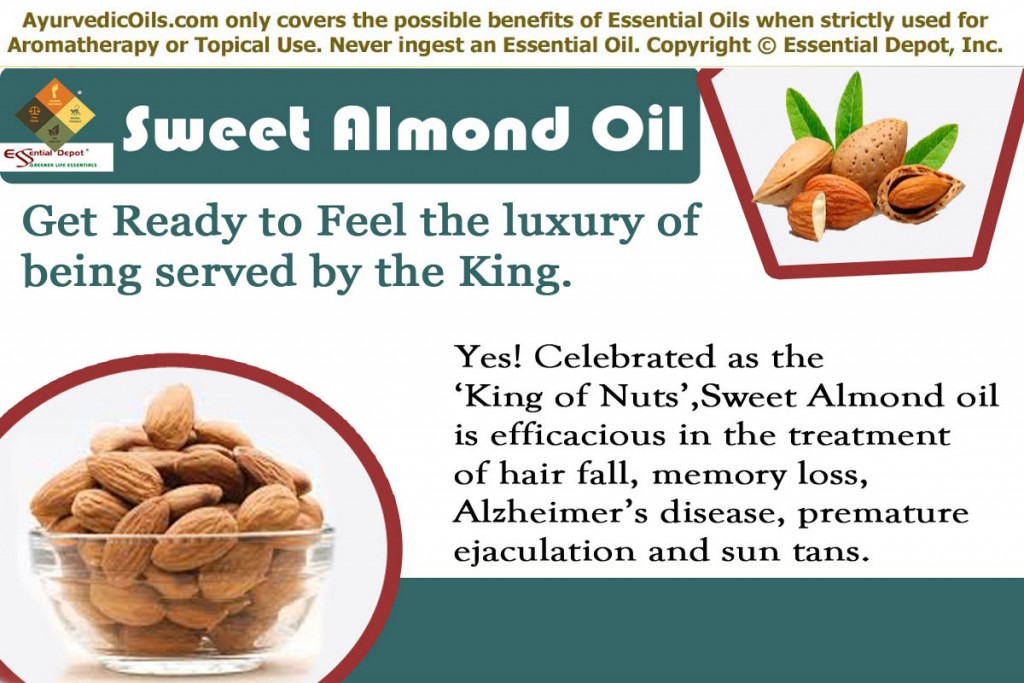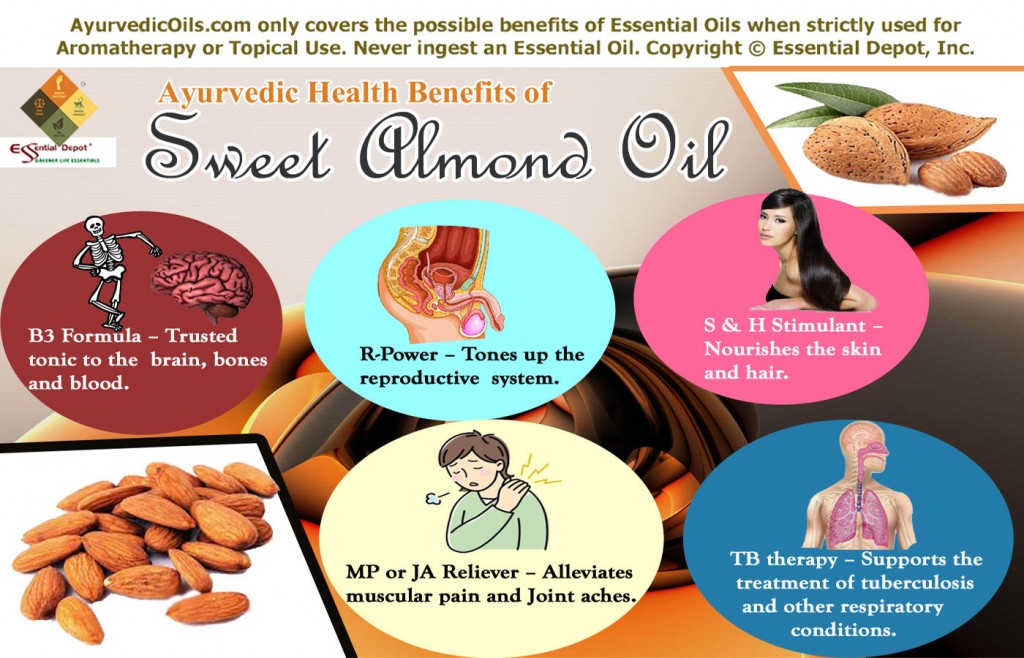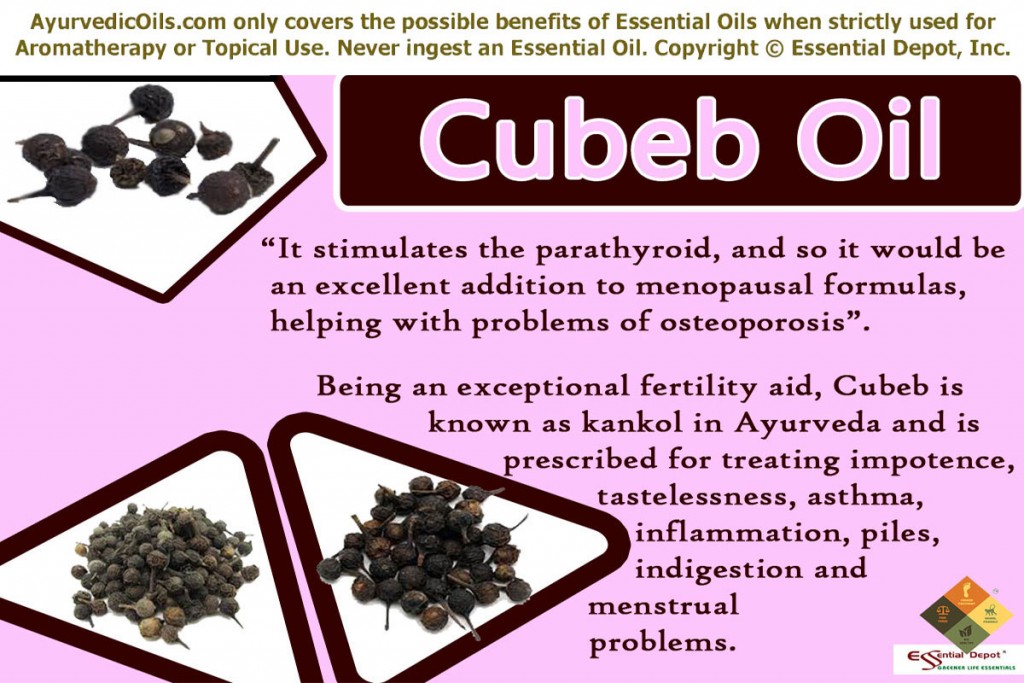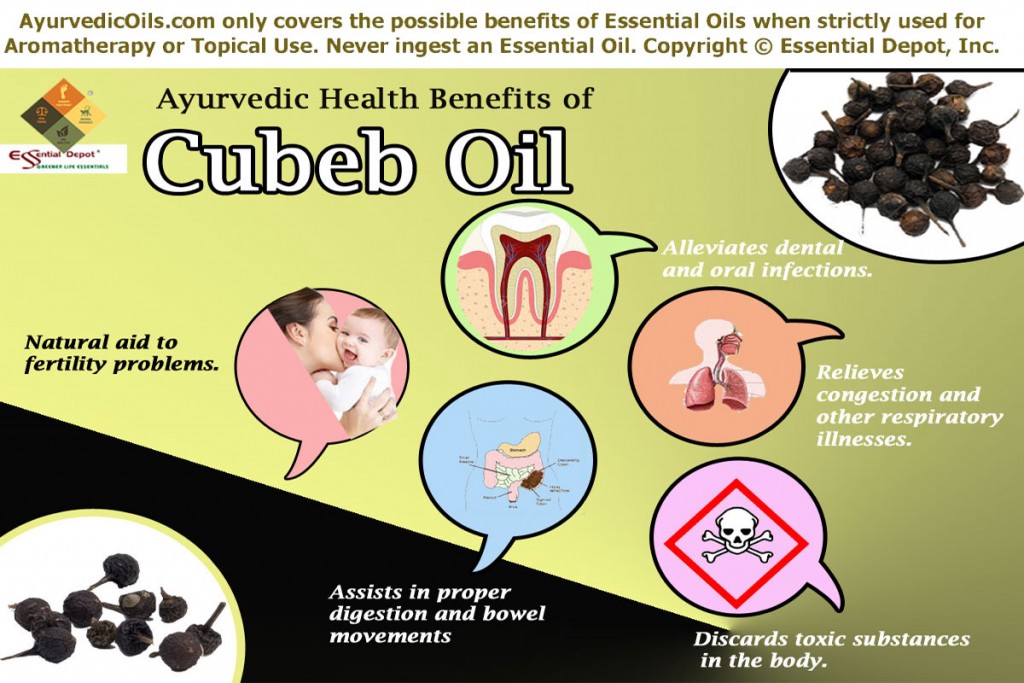 Here’s that jaw-dropping news for all those Almond lovers out there! Almond has been witnessed by various studies for its enormous healing benefits of being a heart-healthy nut, cancer-preventive or antioxidant snack, scrumptious weight-loss bite, and a mighty little powerhouse of proteins, vitamins and minerals.
Here’s that jaw-dropping news for all those Almond lovers out there! Almond has been witnessed by various studies for its enormous healing benefits of being a heart-healthy nut, cancer-preventive or antioxidant snack, scrumptious weight-loss bite, and a mighty little powerhouse of proteins, vitamins and minerals.
What more favorable reasons do you need to escape from eating your favorite Almonds or to drench in an enlivening Almond oil massage, the next time? In a much simpler verse, Almond is a one-stop nut for acquiring mammoth remedial attributes.
Badam is the beloved name for Almond in Ayurveda and is lovingly beckoned as the ‘Miracle Nut and the King of Nuts’ in Ayurvedic healing for its sattvic (“pure, essential, natural, vital, energy-containing, clean, conscious, true, honest, wise.”) values.
Almond and its nourishing oil has been prescribed in Ayurvedic medication for treating loss of memory, frigidity, premature ejaculation, mood fluctuations, Alzheimer’s disease, psoriasis, dark complexion, debility, muscular pain and dry skin conditions.
Purchase Sweet Almond Oil – Retail – 1 Quart – CLICK HERE
Purchase Sweet Almond Oil – Wholesale – 1 Gallon – CLICK HERE
Chemical constituents and therapeutic properties of Sweet Almond Oil:
The major chemical components of Sweet Almond oil are 62 per cent of monounsaturated oleic acid; it’s an omega-9 fatty acid, 29 per cent of linoleic acid; it’s a polyunsaturated omega-6 essential fatty acid and 9 per cent of saturated fatty acid.
It also constitutes of phytosterols like beta-sitosterol, campesterol, campestanol, stigmasterol and sitostanol (All these components share a unique attribute of reducing cholesterol.).
Almonds are also rich in calcium, zinc, manganese, phosphorus, magnesium, potassium, vitamin E (skin and hair beneficial vitamin), B vitamins including niacin, riboflavin, thiamine, folate, vitamin B6 and choline.
The most promising remedial properties of Sweet Almond oil are emollient, aphrodisiac, antioxidant, rejuvenative, antispasmodic, demulcent, laxative, tonic for the bones, brain, blood, skin and muscles, sedative and nutritive.
Historical significance and uses of Sweet Almond Oil:
Almond is indigenous to the Mediterranean province of the Middle East, North Africa and West Asia and is a wing of the plum family, Rosaceae. Scientifically called as Prunus amygdalus, Almond is also known with other botanical names including Amygdalus communis, Prunus dulcis and Amygdalus dulcis.
Hopf and Zohary trust that Almonds were one of the earliest cultivated fruit trees owing to “the ability of the grower to raise attractive almonds from seed. Thus, in spite of the fact that this plant does not lend itself to propagation from suckers or from cuttings, it could have been domesticated even before the introduction of grafting”.
Certain other sources state that Almonds were found in the Early Bronze Age (3000 to 2000 BC), like the archaeological sites of Jordan or Numeria.
The name Almond is extracted from the French word alemande or almande and also from the Greek word amydala, meaning an almond. The most interesting fact is that the ‘part of the brain – amygdala’ is also extracted from the same word.
‘Amygdala’ is a part of the limbic system of the brain including humans and numerous studies witness the key role of amygdala in the function of decision-making, memory and emotions. Anomalous working of amygdala paves way to depression, phobias, anxiety, post-traumatic disorders, autism and neurotransmitter imbalances.
The awesome news is that the Almond nuts and Almond oil assist in enhancing the functions of the almond-shaped amydala of the brain, supporting in overcoming depression, phobias, anxiety and in strengthening the emotional and psychosomatic functions.
It is mainly for this reason, Almond is called as the ‘King of Nuts’ and was among the royal food given to the Kings and other dignitaries in Supreme power to augment their decision-making potential.
The innermost seed of the Almond fruit is the delicious and yummy almond nuts that we taste. Numerous medieval and primordial books on medicine talk about the significance of Almonds and its oil in treating various health conditions and enhancing the body’s natural immunity.
Many herbalists of various ages have talked about the use of Almond oil. Dioscorides, the celebrated author of Materia Medica enlists natural ointment recipes with the use of almond oil.
John Gerard recommends the topical application of almond oil in the treatment of colic and body pain. Nicholas Culpeper prescribes almond oil as an excellent natural aid for alleviating stress and enhancing cognitive functions, when massaged on the temples and forehead.
Being a nutritionally intense food variety with enormous nutrients, almonds are used in various culinary items across the globe. The most popular among them are almond milk, almond syrup, almond flour, almond-rich Mughlai curries, almond macaroons, soumada, amygdalota, Amlou (popular spread with a blend of almond nut paste, honey and Argan oil), sherbet-e-badaam and much more.
Almond oil is a trusted secret ingredient of numerous celebrated massage therapists across the globe as an excellent emollient for lubricating the skin and enhancing the natural skin texture.
Ayurvedic health benefits of Sweet Almond Oil:
With its oily, heavy and mild hot potency, Badam or Almond oil is known for pacifying vata and pitta doshas and for aggravating kapha dosha.
Ayurveda states that Almond and its oil have the potent to moisturize and nourish the skin along with the micro-circulatory channels. Almond is among the few Ayurvedic remedies for augmenting the functions of all the seven dhatus (tissues).
It enhances the functions of the reproductive tissues known as Shukra dhatu, thus assisting in the treatment of impotence, premature ejaculation, loss of libido and frigidity. Almond is an Ojas nut for its potent to increase the vitality of the system in a comprehensive manner.
Ayurvedic texts denote that Almonds are effective in fostering the functions of the muscles, bones, plasma and the reproductive system.
Beckoned as a tonic for the brain, blood, skin, bone, muscle and the body, Almonds have been used in Ayurvedic medications for augmenting virility, building muscular power, increasing immunity, building semen and for enhancing cognitive functions.
Being a divine healing science, Ayurveda considers human body as a temple and the Supreme Power dwelling in it is the soul. It further explains that the eventual accomplishment of the purpose of everyone’s life solely relies on the strength and clearness of the soul.
Ayurveda is a holistic healing system that says that complete health is a combination of the wellness of the mind, body and soul.
Thus Ayurvedic philosophy describes remedies, healthy routine practices and disciplinary values for retaining the body, mind and the spirit in absolute pureness for attaining healthy aging and longevity.
Your first Ayurvedic consultation aims at identifying your doshas or the dynamic biological energies, namely vata (air + space), pitta (fire + water) and kapha (earth + water). All these three doshas are a combination of the five fundamental elements of nature (water, earth, fire, air and ether), with which the entire universe is made up of.
The presence of these five elements in our human body is as follows: earth signifies muscles, cartilages and bones; water represents blood and other fluid substances in the system; air helps in respiration; fire is the heat energy inspiring numerous functions of the body (digestion, body temperature etc), and ether or space is the portrayal of the soul.
Every person has a predominance of any one dosha, which establishes the physique, character, attributes and behavioral patterns.
Absolute balance between doshas as per the law of nature is a symbol of strength and doshic imbalances due to changes in weather conditions, food habits, irregular lifestyle practices and morally wrong habits might lead to sickness.
Ayurveda respects and appreciates individual differences. With this noble thought, every person is treated in a unique manner in Ayurveda as per their Prakriti (unique individual constitution or doshas) and Vikruti (current health condition).
Herbal medications, Ayurvedic essential oils, yogic practices, prayers, simple physical exercises, meditation, Panchakarma (detoxification techniques in Ayurveda), Pranayama (the art of balanced breathing), Abhyanga or Ayurvedic massaging technique, and Dinacharya or Ayurvedic routine are the prime Ayurvedic remedies.
The key Ayurvedic health benefits of Sweet Almond oil are:
 Let’s have a deeper look at the enormous benefits of Sweet Almond Oil:
Let’s have a deeper look at the enormous benefits of Sweet Almond Oil:
1. B3 Formula – Trusted tonic to the brain, bones and blood:
Almond and its oil are the most popular and one among the primordial brain tonics known to mankind.
Soaked and peeled almonds given to children on a regular basis have been proven to enhance brain functions, memory power and cognitive performance.
Harvard Health Publications by the Harvard Medical School in an article ‘Boost your memory by eating right’ quotes that saturated fat and trans fat in our diet increase blood levels of harmful low-density lipoprotein (LDL) cholesterol and harms arteries.
Dr. Francine Grodstein, Associate professor of medicine at Harvard Medical School and associate epidemiologist at Brigham and Women’s Hospital says, “LDL cholesterol builds up in, and damages, arteries. We know that’s bad for your heart. There is now a lot of evidence that it’s also bad for your brain.”
Food items that are rich in cholesterol and fat may augment the development of beta-amyloid plaques in the brain. Such sticky protein clusters (b-amyloid plaques) are held responsible for most of the damage that happens in the brains of people affected with Alzheimer’s disease and memory loss problems.
Diet rich in monounsaturated and polyunsaturated fatty acids are the valiant heroes to protect the brain from memory loss problems.
Almond is rich in both mono and polyunsaturated fatty acids and is a reliable natural aid that has been associated with lessening the occurrence of mild cognitive impairment, dementia due to Alzheimer’s disease and Cerebrasthenia or short term memory loss.
Almonds contain l-carnitine, riboflavin and phenylalanine, the cognitive abilities and mood enhancing chemicals. As a quickly absorbent oil, phenylalanine supports in the secretion of hormones, including dopamine and adrenaline.
These hormones have been proved to augment brain functions, create new neural passageways and calm the system. Thus, assisting in the improvement of mental alertness, positive reflexes, enhanced memory, cerebral functions and the power of optimistic thinking.
Almond and its oil also have vitamins and minerals like calcium and phosphorus that have a positive effect on the potency and resilience of bones and teeth. Thus, it can support in strengthening bones and teeth and in preventing gingivitis, osteoporosis etc.,
Rich in iron and zinc, Almonds have been recommended for increasing the count of RBC or red blood corpuscles. This helps in treating anemia, weak immunity and irregular blood circulation.
Almond oil is a light, non-sticky and easily absorbing oil that penetrates deeply into the skin and reaches the blood stream. Thus, it passes on its therapeutic properties to the entire system and works on the corresponding parts of the body, requiring the essential nutrients to function effectively.
Blend 3 ounce of Almond oil with 5 drops of Brahmi oil and 5 drops of Rosemary oil for a complete and tranquilizing massage of your system, twice in a week or once in two days.
This might support in strengthening your bones and teeth, increasing your cerebral activities and cognitive performance, improving memory functions and in treating anemia.
You can also add 2 drops of Almond oil with 1drop of Rosemary oil in your daily shampoo for boosting your memory and instilling positive feelings.
Meditation or prayer for about 10 to 15 minutes every day, especially in the early hours of the day can assist in deepening your thoughts, improving your cognitive response, intensifying your connection with the Divine Force and supporting in the secretion of positive hormones and supportive chemicals in the brain.
2. R-Power – Tones up the reproductive system:
Baby is a boon indeed and a healthy reproductive system supports the growth of a healthy fetus.
Almond and its oil can be beckoned as the ‘R-Power’ means the ‘Real-power or the Reproductive-power’.
Almond and its oil are held high in Ayurveda for its enormous power in invigorating the functions of Shukra dhatu or the reproductive tissues in both men and women.
Almond is a traditional remedy for thickening the semen, treat premature ejaculation, loss of sexual interest and for increasing the sperm count and vitality in men. Similarly Almonds are also recommended for treating menstrual difficulties, frigidity and for regularizing the secretion of hormones.
Munching on soaked almonds during pregnancy is a great way to nourish the senses and the brain development of the growing fetus. It strengthens the uterus and stimulates the functions of the female reproductive system.
Almonds are a rich source of natural folic acid and are recommended by medical practitioners for pregnant women, especially to prevent the occurrence of birth deficiencies in newborn babies, enhance brain development of the growing fetus, support healthy cellular structure and tissue development and to thwart neural tube conditions.
Almond milk also known popularly as Badam milk in India is an ancient remedy for boosting sexual energy and libido in men.
With the presence of nutrients including selenium (treats infertility), vitamin E (nurtures heart health and immunity), omega – 3 fatty acids (lubricates the system and supports proper circulation), zinc, L-arginine (increases libido and sperm count) and other minerals, Almond aids in fortifying sexual wellness and reinforce the reproductive mechanism.
Almonds along with certain other nuts and pulses contain phytosterols, the nutritious plant chemicals that are proven to encourage the production of testosterone and the presence of magnesium stabilizes prolactin hormone that deteriorates testosterone.
Soaking 4 almonds overnight and eating it as the first thing in the morning grants one enormous energy and stamina to revolve around throughout the day. Enjoy the nutritious Badam milk by blending the ground mixture of 4 almonds, 2 cashew nuts, 1 pinch of saffron, half a pinch of cardamom powder and required sugar to taste.
Take this nourishing drink half an hour before going to bed. It might help in increasing testosterone production, sperm count and libido both in men and women.
Massaging your lower abdomen, thighs, genital parts and back with 1 ounce of Almond oil blended with 2 drops of Ashwagandha oil and 1 drop of Ylang Ylang oil and taking a warm bath before going to bed can also help in elevating your mood, treating premature ejaculation, impotence, frigidity and lack of sexual interest.
Eat wholesome diet with protein, vitamins, minerals and fiber for a healthy mind, healthy body and enormous energy.
3. S & H Stimulant – Nourishes the skin and hair:
Apart from being an extraordinary skin nourishing oil, Almond oil protects the skin from the harmful ultra violet rays. Being a rich source of vitamin E, the friendly vitamin for the skin and hair, Almond oil is an effective antioxidant that encourages the production of red blood cells.
A 2007 study on the effects of Almond oil on skin’s exposure to UV radiation published in the ‘Journal of Cosmetic Dermatology’ draws a conclusion that dermatological use of Almond oil has the potent to lower the aging process and thwart structural mayhems produced by Ultra Violet radiation.
Free radicals arrest the growth of healthy skin cells and damage the existing active cells. This in turn paves way for symptoms of aging like wrinkles and fine lines along with the risk of chronic health conditions including heart problems and malignant tumors.
With its natural moisturizing and emollient properties, Almond oil strengthens the collagen (structural protein for supple and youthful skin) and is a trusted natural medication for treating dry, rough and mature skin conditions.
Vata imbalance ends up in dry and lifeless skin and Almond is one among the best oils for lubricating the skin naturally with its intense penetrating and nourishing properties that enrich the skin cells from within.
Maharishi Ayurveda quotes Almond oil as the best natural massage oil for people with Vata vitiations. Few other special reasons for using Almond oil for your skin is that it never block pores and assist in discovering supple, clear and attractive skin in the pink.
Pure and organic Almond oils are absolutely safe for use on babies as well, mainly because of the fact that its hypoallergenic oil that is gentle and completely safe on the skin and scalp. It is an excellent make-up remover with its natural cleansing and harmless effects.
With its deeper penetration and innate cleansing values, Almond oil is highly recommended for getting rid of tans, marks, acne flare-ups, stretch marks, chapped lip conditions, dirt and excess oil secretion in the skin surface, dark circles, rashes and other skin conditions. Almond oil acts as a tonic to the skin with high content of vitamin A, vitamin E and other skin nourishing nutrients.
Mix 5 drops of Almond oil with 1 drop of Jojoba oil and 2 drops of Honey and massage it on damaged skin in slow circular movements. Leave it for 10 minutes and clean it with a mild natural skin cleanser for soft, supple and blemish-free glowing skin.
You can also dab this mixture on rashes and other skin conditions for supporting quicker healing and deep cleansing.
Almonds for your hair: Hair is among the vital possessions for natural beauty for both men and women. Men consider healthy hair as an emblem of manliness and women boast it as an icon of their style statement and femininity.
Loss of hair, dandruff and other scalp conditions are more than enough to draw dullness on anyone’s life. Though environmental conditions, lack of nutrition and stressful lifestyle contribute to hair problems, clinging on to natural alternatives like Almond oil might undoubtedly save your head.
Massaging your hair and scalp with 1 ounce of Almond oil blended with 5 drops of Rosemary oil, 2 drops of Wheat germ oil and 2 drops of Curry leaves oil every week can help in strengthening your hair follicles, repairing the scalp conditions, moisturizing your hair and scalp, lessening dandruff and supplying the required nutrients to your lustrous locks.
4. MP or JA Reliever – Alleviates muscular pain and joint aches:
Almond is one among those highly nutritious nuts in strengthening muscles, relaxing tensed muscular system, enhances the electrical impulses of your neurons, augments energy, fortifies the immune system and reinforces durability and potency of bones and teeth.
Ah! It hurts! Yes, joint aches, muscular twinge, irritation, swelling and all other conditions are extremely challenging as it makes one to crawl on their knees in annoying pain.
Thousands of reasons can be listed behind such exaggerating conditions. They might be arthritis, rheumatism, muscular tension, strenuous labor, prolonged sitting in the same place during work, rheumatoid arthritis and much more.
Muscular pain, joint ache and rheumatic conditions are often caused by vata vitiation. Backbreaking work or physical exertion ends up in improper blood circulation, muscular pain and stiffness.
Almond oil is also effective in the treatment of vascular conditions like varicose veins, hemorrhoids and spider veins.
With its tendency to pacify excess vata conditions, Almond oil can reduce pain, relieve muscular tension, enhance blood circulation, lessen swelling and soreness.
Heat 1 ounce of Almond oil with 2 drops of Garlic oil and gently massage the painful parts with this warm blend. Rest a hot water bag over it and leave it for about 10 minutes for better results.
Other health benefits:
Apart from the above health uses, Sweet Almond and its oil are also effective as a TB therapy with its ability to support the treatment of tuberculosis and other respiratory conditions, with its antispasmodic and tonic properties. It is also an excellent stimulant to the blood and aids in treating anemia.
The high monounsaturated fat content along with other fatty acids in Almonds and other nuts act as a cardio protective agent that is also related to favorable plasma lipid profiles and lessened cardiovascular risks.
Almond is also a delicious stress-relieving snack that soothes your nerves and grants absolute solace to your mind. It is also known for strengthening the gums and protecting the teeth from the effects of dental cavities.
Disclaimer:
This post is ordained only for informational purposes and is not meant to treat, substitute or prevent any sickness or replace prescribed medications or the advice of your medical professional. We, at Essential Depot are not healthcare professionals and this information is shared with the trance of spreading the ancient healing wisdom of Ayurveda, the pioneer of all healing sciences in the universe.
Organic and pure essential oils are always recommended only for topical application and should not be ingested. This is due to the fact that 100 per cent pure and organic oils are highly concentrated substances and might cause allergic reactions, if used on the skin directly.
Consult your Ayurvedic expert or healthcare professional prior to choosing the apt oils for your unique individual constitution or Prakriti and health condition or Vikruti. Care should be taken if you are using essential oils on pregnant women, elderly people, children and nursing mothers.
Thought for the day:
I said to the almond tree, ‘Friend, speak to me of God,’ and the almond tree blossomed.
-Nikos Kazantzakis
Suggested Reading:
- Almond Oil for Health and Beauty: Discover the Various Health, Beauty and Culinary Secrets of This Vitamin Rich Oil by Angelina Jacobs
- Almond Oil Miracle: Almond Oil Miracles and Almond Oil Quick, Delicious in one Incredible Box Set by Thomas Longe
- Almond Oil Beauty Secrets: 50 Incredible Almond Oil Recipes for Flawless Skin and Killer Hair! (The DIY Naturalist Book 1) by Rosemary Fryberger
- Sweet Almond Oil (Carrier Oils Book 14) by Miriam Kinai
- Almond Oil – Magic in a Flask: Be As Beautiful On the Outside As You Are Inside by Lisa A Miller
Reference Links:
- Boost your memory by eating right by Harvard Health Publications, Harvard Medical School
- Almond by Wikipedia
- Effect of pre-treatment of almond oil on ultraviolet B-induced cutaneous photo-aging in mice by Sultana Y, Kohli K, Athar M, Khar RK, Aqil M, Department of Pharmaceutics, Hamdard University, New Delhi, India, published in the Journal of Cosmetic Dermatology.
- Skin and hair benefits of Sweet Almond Oil by The Health Site
- Almonds and almond oil have similar effects on plasma lipids and LDL oxidation in healthy men and women by Hyson DA, Schneeman BO, Davis PA, Department of Nutrition, University of California, published in PubMed


